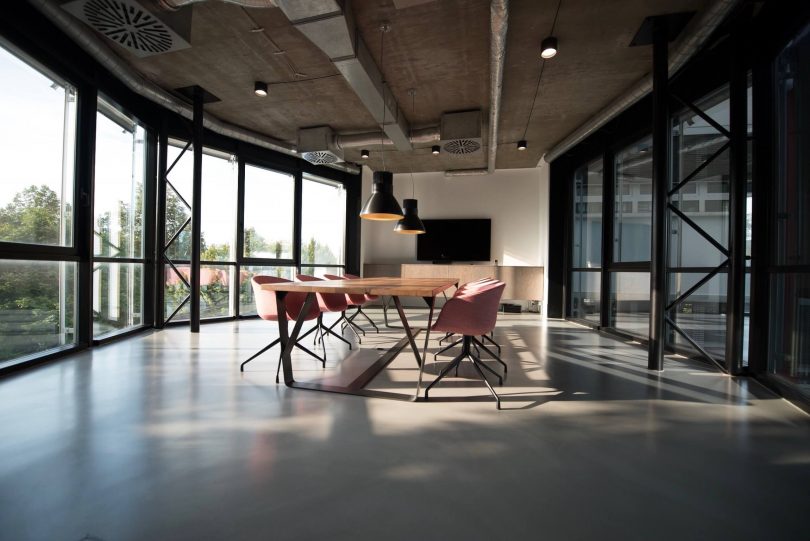Contents
If you’re running your own business, it’s highly likely that at some point you’ll be faced with the decision to move offices. You may be a solo operator looking to branch out beyond your home office, maybe you’re exploring new geographic markets, or perhaps you’re expanding a small team and simply need more space. It’s inevitable that your business needs or operations will change over time and the office space you’re in, may simply not always be able to support them.
Before planning an office relocation, there are a number of things to consider:
1. Location, Location, Location
Just like moving home, selecting the right location for your new office requires careful consideration. Take some time to think about your customers or clients and other stakeholders, as well as your staff.
- How will the location of your office impact them?
- How accessible is it?
- What about parking and public transport options?
It is important that your customers and any staff can easily get to and from your office. You should also consider the safety of the surrounding area, and whether they will feel secure travelling to and from the office. Amenities is another important factor, assess where the nearest supermarkets, cafes and shopping areas are.
2. Technology
The technological infrastructure is an important element that you’ll need to factor in, which largely depends on what your business needs. Things to consider include:
- Power
- Heating & cooling
- Communication services
- Wireless connectivity
- Phone/computer systems & cabling
- Security
Make sure these systems are tested before you move in, to ensure that downtime is minimised. If something is lacking, you may be up for significant installation costs.
3. How Much Space Do You Need?
Moving office is a good time to take a look at the type of business you are running and what type of space will best support it. Will you be there from 9-5 each day, or do you spend a significant amount of time visiting customers? What about weekends? Do your employees need a traditional workstation (desk/chair/computer), or does it need to be a more flexible set-up? Your specific business and the type of work that you do will dictate the type of work space need, so consider this carefully.
This flows into working out how much space you realistically need. The bigger the space, the bigger the costs – it’s not just the rent but also rates, service charges, energy bills etc. As a guide, estimate ~10sqm for each employee, plus meeting rooms, as well as kitchen and storage areas.
Then, think about the plans you have for the future of your business. Do you need space to expand and if so, how much space? Look for premises that can sustain the growth of your business, and at the same time, one that isn’t too large should you scale back operations in the future.
4. What About Furnishings?
New furnishings are often a necessity when moving into a new office. If the new layout is significantly different, there’s a chance any current furniture you have won’t fit into the new space. On the other hand, if you’re moving into a bigger space, more furnishings will be a necessity.
When reviewing furnishing options, it’s a good time to look at what structure and furnishing will best support your business and maximise productivity. If you are in a creative industry, an open-plan office with break out spaces is great for collaboration. If your business deals with sensitive matters, it may be more practical to have individual offices or cubicles, which will provide privacy.
Office furnishings is a significant investment, therefore if you are looking for flexibility, furniture rental options could be your best option. This will allow you move again in the future, and simply return furnishings that are no longer needed.
5. Your Brand and Workplace Culture
Your office environment says a lot about your business’s brand, so think about what kind of message you’re communicating to customers and other stakeholders when they come in. An office can also greatly influence the culture of your workplace. Consider the culture you want to establish or retain, and how your office set up may affect this. Try to find a balance between creating an office environment that fosters productivity, while also creating an attractive space to work in.
6. Business Continuity
Depending on the size of your business, moving office can have a stressful and disruptive impact on business operations. Consider how you can best minimise any disruption during the moving process, to help soften the impact it has on customers and output.
In a perfect word, the move would happen outside of business hours, and staff should be able to come in and pick up exactly where they left off. However, things may not always go to plan. Take the time to develop a detailed back-up plan which outlines how the business will function should any systems fail. This could mean staff need to work from home, or remotely for a few days until the new office is up and running smoothly.
7. Moving Help from Professionals
We often encounter businesses that underestimate the time and stress involved in moving office, which can have a short and long-term detrimental impact on operations. Enlisting the help of a commercial relocation service or office removalist and hiring professionals to do the job for you, will greatly alleviate the mental and physical strain. They’ll can take care of the moving, so you can put your energy into finding the perfect new office for your business!
“The opinions expressed by BizWitty Contributors are their own, not those of BizCover and should not be relied upon in place of appropriate professional advice. Please read our full disclaimer."







